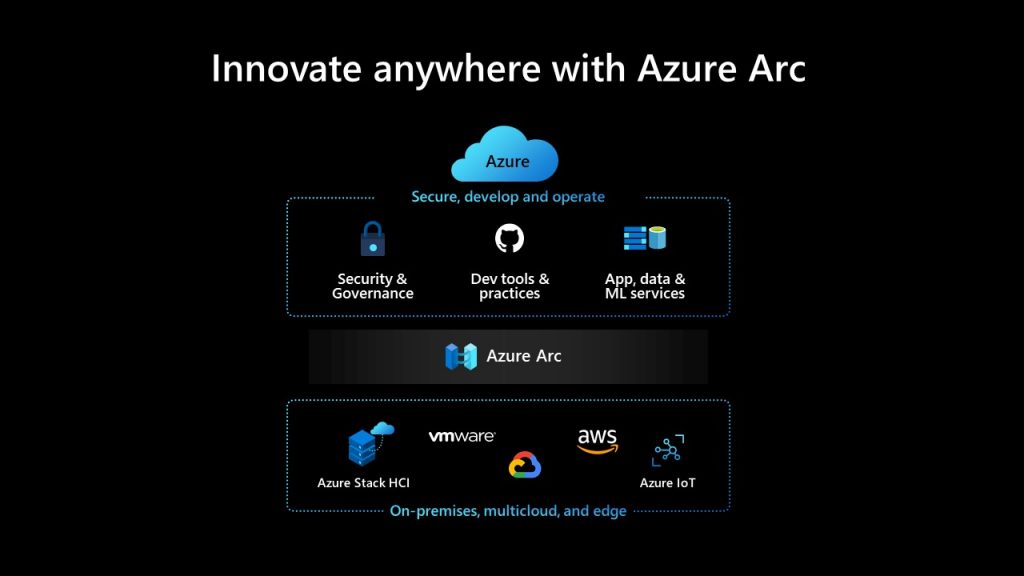
How Nokia is using Azure Arc to empower customers in a multicloud world
Organizations today are increasingly operating in multicloud and hybrid environments, using a mix of public, private and edge clouds to manage their technology assets.
That has created opportunities and complexities for enterprises in serving their customers, as telecommunications giant Nokia can attest. The Finnish company recently began using Microsoft Azure Arc, a multicloud and on-premises management platform, a key step in its commitment to serve customers in that new environment.

Paolo Tornaghi.
The path leading to Azure Arc dates back to 2016, when Nokia launched its Analytics, Virtualization and Automation (AVA) system, an artificial intelligence-based analytics platform. The company designed the system to help its cell phone carrier customers use data to improve operational efficiencies, increase revenues and provide better experiences for their own customers.
Up to that point, Nokia engineers had been entering data in spreadsheets and using manual methods for analytics. The approach was inefficient, error-prone and inadequate for handling large amounts of data.
“Given the massive increase in network capacity and size, that wasn’t sustainable anymore,” says Paolo Tornaghi, who leads the technology and architecture team in Nokia’s business applications’ advanced services division. “We needed applications that are scalable for customers.”
The AVA system draws data from network operations and other sources to provide AI-powered insights and identify solutions to workflow issues. In 2019, Nokia migrated AVA to the cloud. Moving to Azure gave Nokia the ability to offer AI-powered analytics to customers globally through AVA without needing to manage their individual clouds.
The cloud offered immediate benefits, but as Nokia began to scale AVA, new parameters emerged. For some customers, geographically specific regulatory requirements necessitated keeping data in-country, while other customers wanted to use AVA on other public or private clouds instead of Nokia’s.

Azure Arc allows users to manage distributed environments across on-premises, edge and multicloud environments.
Developing bespoke solutions for individual customers wasn’t feasible, and Nokia needed to find a way to deploy its AVA services uniformly across whatever Kubernetes arrangements customers were using.
“That was becoming a problem for us. We weren’t able to offer AVA to our customers who had these restrictions. We had to do something about it,” says Kalyanjeet Gogoi, head of business applications’ advanced services research and development for Nokia.
“This problem is something we put in front of Microsoft and said, ‘How do we handle this?’ It’s a very strong partnership. We develop a lot of our solutions together.”

Kalyanjeet Gogoi.
A team of Microsoft engineers worked closely with Nokia to integrate Azure Arc with AVA and develop the flexible, scalable infrastructure management solution customers needed. Launched in 2019, Azure Arc centralizes how businesses manage their multicloud and on-premises technology, from data centers to edge devices, by projecting resources into Azure.
For Nokia, adopting Azure Arc means the company can operate and monitor AVA applications that are run in customers’ preferred clouds and still meet data regulations in various countries. Sensitive data remains in customers’ clouds and is not transferred elsewhere.
The new Azure Arc-enabled AVA architecture has two parts: a Nokia-owned Azure subscription where AVA applications and workloads run, and a customer cloud with the customer’s Kubernetes stack, onto which Nokia deploys and maintains its AVA applications. The two clouds communicate over a secure channel.
“Security is vital for our customers, and for Nokia,” says Tornaghi. “With Azure Arc and the fact that we are not going to move data from the customer cloud to Azure, data security and privacy is fully respected. No sensitive data is going to be flowing to the public cloud.”
Azure Arc enables Nokia to monitor and manage AVA services through a single screen, Gogoi says, providing visibility into the solutions various customers are using and avoiding the need for localized teams to deploy and monitor those services.
And the new architecture allows Nokia to serve customers it previously could not, Tornaghi says.
“What’s important for customers is respecting the data regulatory requirements they have and also respecting their cloud strategy,” he says. “Those are really the two important points for them, and that’s what, by leveraging Azure Arc, we are solving.”
Top photo: Nokia’s campus in Espoo, Finland. (Courtesy of Nokia)
